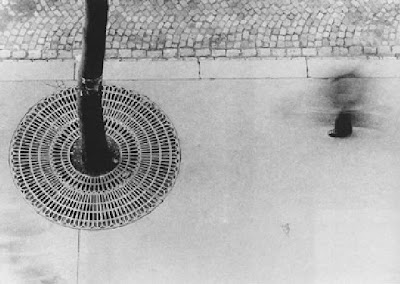 Hartford, 1979
Hartford, 1979 Philip-Lorca diCorcia
I think this is one of the most powerful images I've seen. It seems almost solidly still - calmly banal but filled with emotion. This picture doesn't attack or offend or shock, but it screams a silence at me. We see a man, staring out a window. He seems entirely detached from his surroundings, searching, beyond our view. We see a man that seems an icon of american society, a pioneer of that american dream. Dressed in suit and tie, early or late, with coffee and cigarette he is here, at this moment, searching for something else. Here, we see a man that is sad.
I find myself following his gaze. I notice a tree creeping into the frame. Looking closely, I see there are little buds - it must be spring. It looks black against the fading sun. Then I notice a potted plant in the man's house, an all year green lit yellow in an artificial light.
The man lives higher than his neighbours. The staging of the photograph places us at an imaginary point, floating outside his apartment, looking at him, who in turn is looking for something else. The brick facade of his apartment takes over half of our framed view - takes priority over the natural world in the background.



